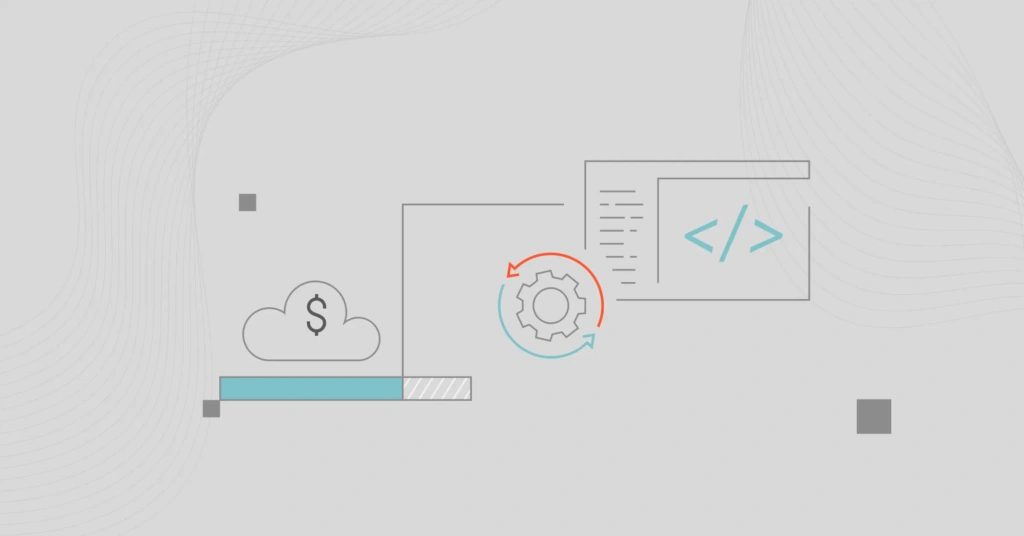As 2024 peeks into 2025, cloud-driven businesses are poised for yet another year of record cloud spending. After exceeding $675B this year, cloud spenders are expected to shell out more than $820B in 2025 (Gartner).
But as any good unit economist knows, it’s not just that cloud costs are growing, it’s that they’re growing inefficiently — taking too big a bite out of companies’ profits. Roughly three quarters of companies say cloud costs consume at least 6% of their revenue, with 31% saying they consume 11% or more (report).
To plug the cloud inefficiency leak, cloud-driven companies desperately need two things:
- Precise cloud efficiency calculations, including data on which areas of the business are most and least efficient
- Clear steps on how to eliminate cloud waste and establish long-term cloud efficiency
CloudZero is the only platform that helps companies do both. Our unit economics workflow helps the world’s most sophisticated cloud spenders quantify and optimize their cloud efficiency — like Nubank, which continuously calculates more than 20 custom unit cost metrics and credits CloudZero with helping reduce their cost to serve, expand their customer base, and increase their gross margin.
Today, CloudZero’s unit economics workflow gets a whole lot easier. By using our new Telemetry Stream CSV Import, companies can now create unit cost metric dashboards simply by uploading a CSV file. Unit cost metrics are the engine of cloud unit economics; this new feature makes it easier for companies to get that engine humming.
What Are Unit Cost Metrics?
Very simply: A unit cost metric is a measurement of how efficiently your company is operating in the cloud, calculated as cloud cost divided by unit of demand. That unit of demand — your demand driver — will vary depending on what your business does.
Here are a few simple examples:
| Company Type | Unit Cost Metric |
| Food delivery app | Cost per 1,000 orders |
| Cybersecurity firm | Cost per 1,000 firewalls |
| Fintech platform | Cost per transaction |
| Shipping logistics company | Cost per 1,000 shipments |
Unit cost metrics tell them how efficiently they’re using the cloud to generate business value. Assuming these companies were CloudZero customers (and they all are), they’d use these metric a variety of ways, all of which orient around the common goal of reducing their cost to serve as much as possible while preserving business value:
- Track it over time
- Juxtapose it with their Cloud Efficiency Rate (CER)
- Divvy it up by different customers, products, features, engineering teams, etc.
- Identify the most and least profitable customers, products, features, teams, etc.
Learn more about cloud unit economics in our comprehensive, fun guide.
How CloudZero’s CSV Import Works
Using our Telemetry Stream CSV Import feature, CloudZero customers can create unit cost metric dashboards in a few simple steps:
- Generate a CSV file with a month’s worth of data, including columns for: a timestamp (in any format), a unit value (greater than 0), and up to five Dimension elements (e.g., customer, engineering team, product, feature, etc.)
- Name and define the stream in CloudZero
- Upload the CSV file
- Map the columns: Tell CloudZero which of the CSV file’s columns to associate with which unit cost metric/allocation Dimension
And that’s it. Whenever you want to refresh the data, just generate and upload a new CSV file — no need to create new streams for the same category of data.

Drag-And-Drop Unit Economics
Companies have been using unit economics for centuries — just not in the cloud. Why? A multitude of reasons, including the cloud’s complexity, its youth, and the unchecked spending investors permitted cloud-driven companies to do in the first wave of SaaS.
Today, the cloud is more complex than ever, but investors and shareholders no longer tolerate such liberal spending. Companies need to apply fundamental unit economics principles to the cloud, and CloudZero is the best partner for it.
Click here to schedule a demo and try our Telemetry Stream CSV Import now.








